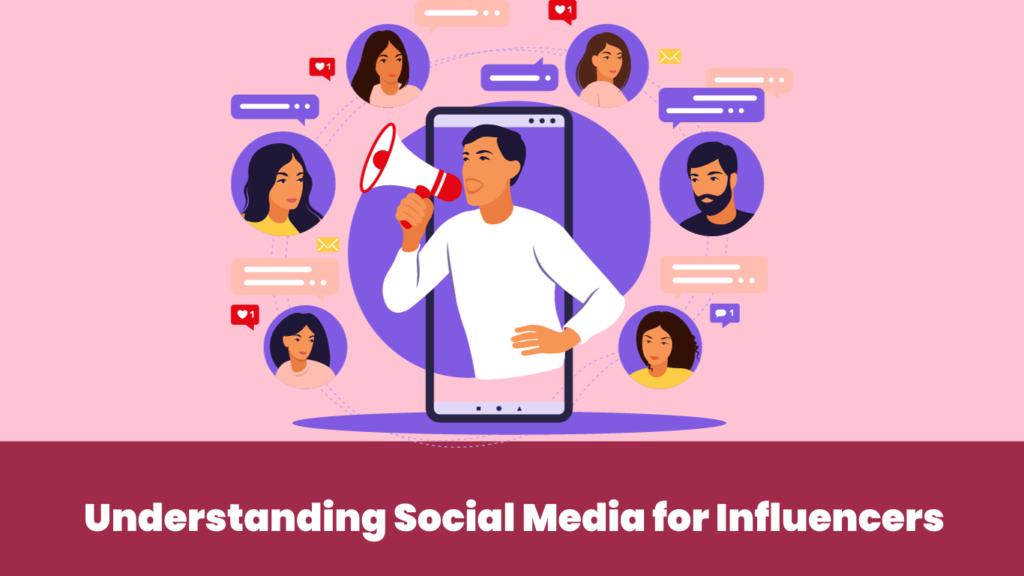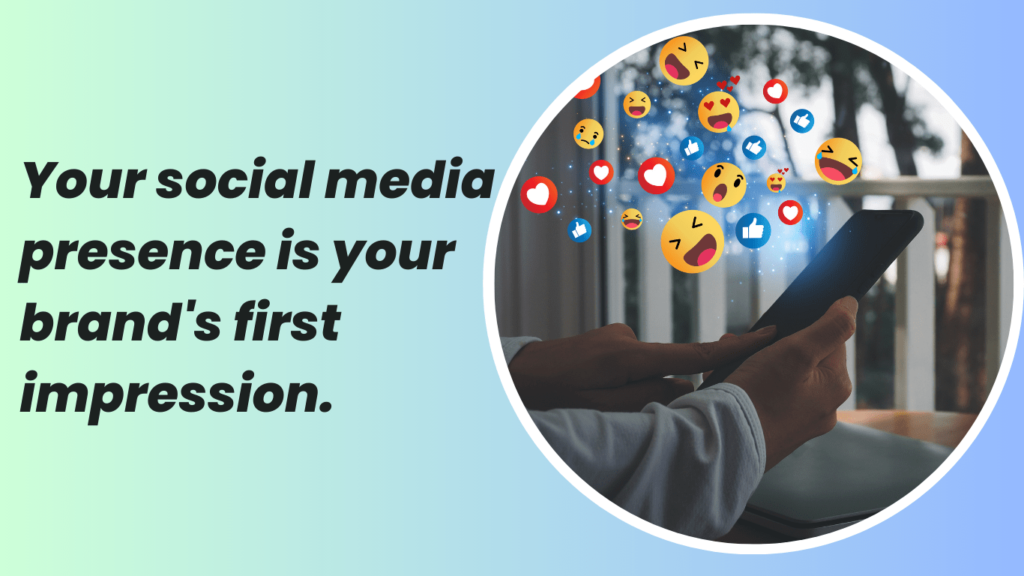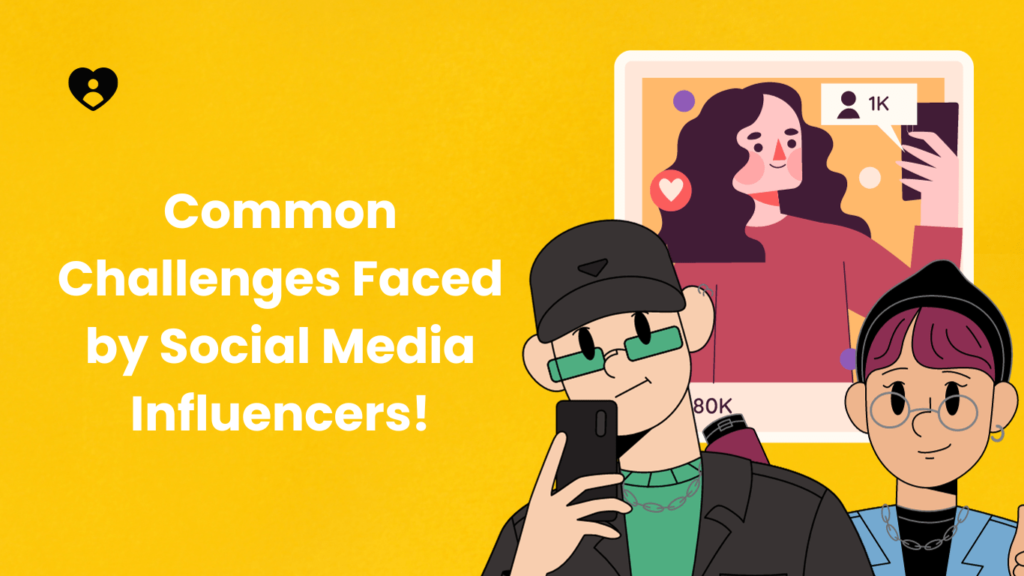Social media has transformed marketing and opened up new opportunities for influencers to build their personal brands. With billions of active users across platforms like Instagram, Facebook, YouTube, TikTok and more, social media provides a powerful way for influencers to connect with their target audience and partner with brands. This article will explore how influencers can leverage social media to achieve success.
◼ The Rise of Social Media and Its Impact on Marketing
Over the past decade, social media has radically changed communication and revolutionized marketing. There are now over 4.2 billion social media users worldwide, with the average user spending 2 hours and 24 minutes per day on social platforms. This massive global audience and high engagement present invaluable opportunities for brands and influencers.
Social media has allowed regular people to build large followings and become influencers. It provides an open, decentralized platform where anyone can share content and gain visibility. For marketers, social media offers owned media channels to directly engage with target audiences. Influencers enable brands to tap into these audiences and humanize their marketing.
◼ The Role of Influencers in Social Media Marketing
An influencer is someone who has built credibility and a loyal following in a specific industry or niche. Influencers have turnkey access to engaged social media audiences that trust their opinions. More than half of consumers rely on influencer recommendations and content when making purchasing decisions.
Brands collaborate with influencers to raise awareness, increase engagement, drive conversions and sales, and capitalize on the influencer's reputation and relationship with their audience. The right influencer partnerships can offer brands increased authenticity, trust, and sales at a fraction of the cost of traditional ads.
◼ Benefits of Using Social Media for Influencers
There are many advantages for influencers who strategically leverage social media to grow their personal brand:
- Build a large audience: Social media allows influencers to reach millions of potential followers who are interested in their niche.
- Increase visibility: Consistently sharing high-value content boosts an influencer's discovery and visibility.
- Monetization opportunities: Sponsored content, affiliate marketing, and brand collaborations enable influencers to monetize their audience.
- Data and analytics: Social media analytics provide valuable insights into audience demographics and engagement.
- Owned media channel: An influencer's social media feeds are owned media channels to directly engage their audience.
- Position as an industry expert: Posting niche content and engaging with followers establishes an influencer as a thought leader.
- Expand reach: Hashtags and @mentions help influencers connect with new audiences and grow their reach.
1. Understanding Social Media for Influencers

Successfully leveraging social media requires an in-depth understanding of influencer marketing fundamentals.
➤ Defining Social Media for Influencers
Social media for influencers refers to actively using social platforms like Instagram, Facebook, YouTube, TikTok, Twitter, Snapchat, and Pinterest to build an audience and brand, create and share content, engage with followers, partner with brands, and monetize as an influencer.
Influencers use social media strategically to achieve overarching goals of growing their reach, creating brand awareness, generating revenue through partnerships, and developing meaningful connections through high-value content and engagement.
➤ Identifying Your Target Audience and Niche
The foundation of succeeding as an influencer on social media is identifying a specific target audience and niche. This allows you to create content tailored to them and become a trusted source for that subject matter. Define your target audience based on demographics like location, age, gender, income level, interests, and other attributes. Research competitors and ensure there is demand within your niche.
➤ Choosing the Right Social Media Platforms for Your Niche
Optimize your efforts by focusing on the social platforms where your audience is most active. Track your audience demographics and behaviors. For example, TikTok is popular among Gen Z while Facebook skews toward older users. You can diversify across multiple platforms or adopt a niche-specific approach if your audience concentrates on certain channels.
➤ Setting Realistic Goals for Your Influencer Marketing Efforts
Create clear goals and benchmarks for your influencer social media use across growth metrics like followers, engagement rate, website traffic, leads generated, and revenue. Establish realistic timeframes for achieving your KPIs based on your current audience size and content velocity. Instagram insights provides data to help assess your growth. Track your progress against your goals.
2. Creating Engaging and Effective Content for Social Media

High-quality, valuable content is the key to success on social media as an influencer. Craft content tailored for each platform that resonates with your audience and aligns with your brand.
➤ Understanding the Different Types of Social Media Content
There are many types of content you can create for social media:
- Stories
- Carousels
- Reels
- Short videos
- Long-form videos
- IGTV videos
- Live videos
- Static images
- Graphics
- Behind-the-scenes
- User-generated content
- Blog posts
- Infographics
- Podcasts
- Quotes
- Q&As
Experiment to see what your audience most engages with. Know the best practices and ideal formats for each specific platform.
➤ Developing a Content Calendar and Schedule
Strategically plan and organize your social media content creation with a content calendar. Schedule posts in advance for optimal timing when your audience is most active. Maintain a consistent posting schedule and identify any seasonal trends or topics you can align content with. Use scheduling tools like Hootsuite to plan and auto-publish content.
➤ Creating High-Quality Visual Content That Resonates with Your Audience
Visual content gets more engagement on social media. Create posts with compelling images and video tailored to your niche that educates, inspires, entertains, or provides value for your audience. Ensure high-quality with image editing tools. Leverage user-generated content. Optimize content for mobile.
➤ Writing Compelling Captions That Capture Attention and Drive Engagement
An engaging, well-written caption makes all the difference. Strategically incorporate relevant hashtags, tag other accounts, use geotags, and include a strong call-to-action to increase engagement and reach. Elicit comments by directly asking questions. Captions should educate, inspire excitement, drive conversions, or convey your brand personality.
3. Building and Maintaining a Strong Social Media Presence

Grow your social media following and engagement with an optimized, consistent presence across platforms.
➤ Optimizing Your Social Media Profiles
Fully complete your social media profiles to look professional. Include an eye-catching profile and cover photo, link to your website, and quality bio summarizing your brand. Ensure consistent branding across accounts and platforms. Update accordingly as your business evolves.
➤ Growing Your Following Through Organic and Paid Methods
Employ both organic and paid growth tactics. Organic efforts include optimizing hashtags, tagging other accounts, collaborating with micro-influencers, engaging followers, and participating in viral trends. Paid methods like promoted posts, influencer partnerships, and social media ads can complement organic efforts. Set a follower growth goal per month.
➤ Engaging with Your Audience and Building Relationships
Social media is inherently social - regularly interact with your audience. Respond to comments, ask questions, run polls and contests. Provide value by answering questions. Building these relationships leads to an engaged, loyal community that feels invested in your brand success.
➤ Using Social Media Analytics to Track Your Progress
Utilize the detailed analytics offered by each platform to gain data-driven insights into your audience and content performance. Monitor engagement rates, best times to post, top-performing content, follower demographics, traffic sources, and ROI of campaigns. Continuously optimize efforts based on learnings.
4. Collaborating with Brands for Successful Influencer Partnerships

Partnering with brands allows influencers to monetize their social media following while increasing visibility and credibility.
➤ Identifying Brands That Align with Your Values and Niche
Vet potential brand partners thoroughly for an ideal alignment with your audience interests, niche, brand persona and values. This ensures content feels authentic versus salesy. Prioritize long-term partnerships for amplified results. Identify brands your audience already knows and loves.
➤ Pitching Your Influencer Services to Brands
Proactively pitch yourself to brands by highlighting your audience demographics, engagement metrics, content examples, and partnership ideas tailored to them. Provide past case studies proving your ability to meet campaign goals. Follow up consistently. Be responsive and reliable throughout negotiations.
➤ Negotiating Influencer Deals and Contracts
Before entering any partnerships, sign contracts covering campaign details, deliverables, usage rights, payment terms, measurement, and more. Negotiate based on your follower count, typical engagement, and market rates. Charge premium rates for exclusive content. Request enough free product for thorough testing.
➤ Measuring the Success of Influencer Partnerships
Track performance metrics throughout partnerships to showcase your ROI and optimize efforts. Gather data on engagement rate, clicks, reach, website traffic, sales driven, social buzz generated, and campaign-specific goals. Highlight successes when pitching to new brands.
5. Staying Authentic and Building Trust with Your Audience
Remaining authentic and gaining your audience's trust is critical as an influencer on social media.
➤ The Importance of Authenticity in Influencer Marketing
Studies show 86% of women would switch from a beloved brand if an influencer's values no longer align with the brand. Inauthentic influencer marketing erodes audience trust and loyalty. Stay true to your values and personality. Be transparent about paid partnerships. Keep your content, recommendations and interactions genuine.
➤ Tips for Staying True to Yourself and Your Brand
- Decline partnerships with brands that don't align with you.
- Give honest feedback if you dislike a product, even if paid.
- Share unfiltered behind-the-scenes look at your life.
- Admit mistakes rather than remaining silent.
- Maintain a consistent brand personality across platforms.
- Focus on topics and causes you genuinely care about.
➤ Building Trust and Credibility with Your Audience
Earn audience trust over time by consistently creating value and upholding your promises. Interact respectfully and avoid exploiting your audience. Be reliable in delivering content on schedule. Admit if you make a mistake. Be responsive to feedback and questions. Share expert knowledge to establish credibility.
➤ Responding to Negative Feedback and Criticism
Address negative feedback professionally and maturely. Apologize if warranted and correct any misinformation. Consider critiques an opportunity for improvement and growth. Remain level-headed and do not retaliate or become defensive. Delete rude or abusive comments if necessary.
6. Tips for Using Social Media to Achieve Specific Goals
In addition to overall brand-building, influencers can leverage social media to accomplish many specific goals:
➤ Increasing Brand Awareness and Visibility
Boost discovery by using maximum hashtags relevant to your niche, participating in viral challenges, getting reposted by bigger accounts, leveraging geotags, and posting Stories consistently. Cross-promote new content across all your social accounts.
➤ Driving Traffic to Your Website or Online Store
Include links to your website, products or offers in captions and on your profile. Share blog posts, new product launches or sale announcements and direct followers to click the link. Use link stickers in Stories. Track your referral traffic.
➤ Generating Leads and Sales
Create gated lead magnet content like quizzes, free downloads or checklists that require an email signup before accessing. Promote affiliate codes and direct people to your products through "swipe up to shop" links. Incentivize purchases with limited-time sales and exclusive offers.
➤ Promoting a Specific Product or Service
Spotlight offerings in dedicated posts highlighting features and value. Share customer testimonials, before-and-afters, and user-generated content featuring your product. Create video tutorials demonstrating how to use the product. Promote through Stories.
7. Essential Tools and Platforms for Social Media Influencers

The right social media tools streamline content creation and analytics for influencers.
➤ Social Media Scheduling and Management Tools
Scheduling tools like Hootsuite, Buffer, and Planoly save time by allowing you to plan, schedule, and auto-publish content across channels. Social media management platforms help organize workflows.
➤ Analytics and Reporting Platforms
Analytics tools like Iconosquare, Social Blade, and Google Analytics provide data to optimize your efforts. Brand monitoring tools like Mention help track engagement. Affiliate marketing platforms offer campaign reporting.
➤ Influencer Marketing Platforms
Influencer marketing platforms like Upfluence, Julius, and Tagger enable you to partner with brands by matching with compatible campaigns. These can amplify partnership opportunities.
➤ Content Creation and Editing Tools
Create polished content with user-friendly design tools like Canva or Adobe Express. Use photo editing apps like Lightroom and VSCO. Streamline video creation with InVideo or Biteable. Invest in professional equipment.
8. Common Challenges Faced by Social Media Influencers

Succeeding as an influencer is rewarding but also poses some common obstacles to manage:
➤ Dealing With Competition and Maintaining Relevance
As social media usage surges, the influencer space has become increasingly saturated. Stay ahead of competitors by carving out your niche, regularly creating novel content, and leveraging trending topics. Consistently reinvent yourself.
➤ Overcoming Creative Blocks and Generating New Ideas
Battle creative blocks by researching competitors and trends for inspiration, brainstorming regularly, planning content in advance, collaborating with others, and varying your content types and formats. Take time off if burnout occurs.
➤ Managing Time Effectively and Juggling Multiple Responsibilities
Balance content creation with community management and external obligations. Create an efficient schedule and daily routines. Automate where possible using scheduling tools. Outsource tasks like editing when needed. Avoid multitasking.
➤ Maintaining a Healthy Work-Life Balance
The pressures of constant content creation on social media can quickly lead to burnout. Maintain boundaries between work and personal time. Unplug from technology periodically. Build in time for self-care, exercise, and recharging. Say no to things outside your bandwidth.
9. Staying Ahead of the Curve in Social Media
As social platforms rapidly evolve, remaining adaptable and learning new skills is essential:
➤ Keeping Up With the Latest Trends and Algorithms
Consistently review platform updates and test new features early. Study trends using social listening tools. Quickly capitalize on viral content opportunities. Adapt your hashtags, content style, and engagement strategy accordingly.
➤ Adapting Your Strategies to New Platforms and Features
Diversify your presence across both established and emerging platforms. Adjust your content approach based on evolving platform preferences and features. Participate in new engagement formats like Reddit AMAs or Clubhouse panels.
➤ Embracing New Technologies and Tools
Incorporate cutting-edge technology like AR filters or live-shopping features. Utilize new content creation tools and social listening software. Update your equipment regularly. Expand your skillset by learning video editing or graphic design.
➤ Continuous Learning and Development
Proactively seek ways to improve by reading industry blogs, listening to podcasts, networking with peers, taking online courses, and monitoring competitor techniques. Remain open-minded, flexible, and curious.
◼ FAQs
1. How do I become an influencer?
Becoming an influencer requires consistently creating high-quality content focused on a specific niche, engaging followers, optimizing hashtags and algorithms, partnering with brands, promoting content across platforms, and tracking analytics. Grow organically or run influencer marketing campaigns.
2. What are the best social media platforms for influencers?
The best platforms are Instagram, Facebook, YouTube, and TikTok due to their high user counts, visual formats, and robust analytics. Twitter, Pinterest, LinkedIn, Snapchat, and Twitch also present opportunities for the right niches. New platforms continue to emerge.
3. How can I create engaging content for social media?
Create content that educates, entertains, inspires, or relates to your audience. Leverage trends and platforms features. Utilize stunning visuals and videos. Share behind-the-scenes looks, user-generated content, and personalized messages. Collaborate with others. Experiment and optimize based on top-performing content.
4. How do I find brands to collaborate with?
Use influencer marketing platforms to connect with brands and discover sponsorships. Actively pitch to brands you want to work with. Build relationships over time. Partner with brands your audience already knows and likes. Prioritize long-term partnerships.
5. How do I measure the success of my influencer marketing efforts?
Track engagement rate, followers gained, website traffic, lead signups, code redemptions, conversions, sales, social buzz and press secured. Set specific benchmark goals for each campaign. Use UTMs to track actions back to content. Compare metrics to competitors.
6. How can I stay authentic and build trust with my audience?
Remain true to your values in partnerships. Share unfiltered behind-the-scenes content. Admit mistakes and apologize when necessary. Consistently provide value through content. Interact respectfully with followers. Be reliable, responsive and honest. Develop your reputation over time.
7. What are the essential tools for social media influencers?
Top tools include photography equipment, editing software, scheduling and analytics platforms, affiliate tracking programs, influencer marketing platforms, social listening tools, collaboration tools, and design programs like Canva. Invest in quality tools.
7. How do I overcome common challenges faced by influencers?
Challenges like competition, creative blocks, time constraints, and burnout can be overcome by knowing your niche, planning content, leveraging trends, outsourcing tasks, automating where possible, unplugging from technology, allowing flexibility in your schedule, saying no to things outside your bandwidth, and asking for help.
9. How can I stay ahead of the curve in social media?
Keep up with new platforms, features, trends and algorithms. Consistently educate yourself through courses, contemporaries, and training. Diversify your presence across platforms. Adapt content styles and strategies quickly as the landscape changes. Utilize new technologies and features early on. Remain nimble and proactive.
Conclusion
Social media presents invaluable opportunities for influencers to build an audience and monetize it through strategic content creation, engagement, and brand collaborations. By focusing on your niche and consistently producing high-quality, relevant content, you can establish yourself as a thought leader in your field. Leveraging social platforms to directly interact with your followers also fosters a sense of community and loyalty. As your reach expands, identifying potential brand partnerships that align authentically with your messaging and values can provide additional income streams while also expanding your audience. However, it's important not to let monetization dominate your strategy - staying true to your voice and maintaining trust with your followers should take priority. With a balanced approach, social media can provide a launchpad for influencers to build a personal media empire with significant financial upside.


